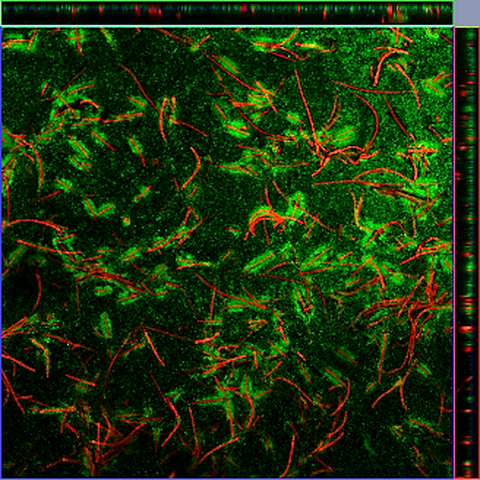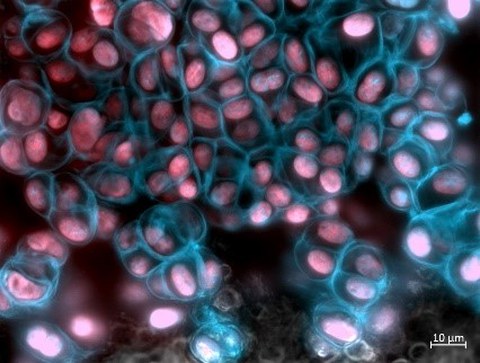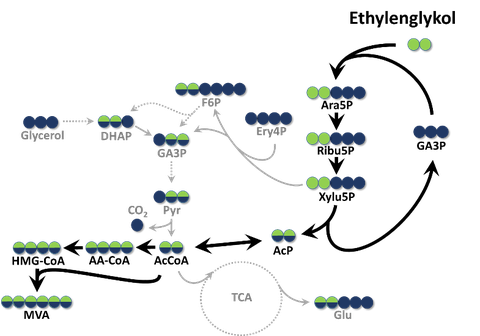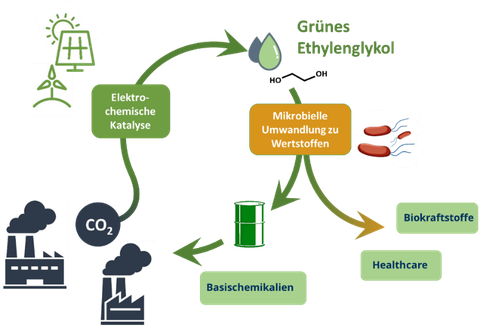Industrial technologies against climate change
Table of contents
CO2 - from problem molecule to raw material

Einige unserer fleißigen Helfer. Konfokale Laser Scanning Mikroskopie von Tolypotrix sp. (rot) vergesellschaftet mit Pseudomonas sp. (grün)
O2 is rightly earning lousy press because it is considered the leading cause of climate change. It is released in gigantic quantities as the end product of combustion and, as a greenhouse gas, significantly accelerates global warming. At the same time, carbon is one of the essential elements of all and is used in large quantities in biomass and in an infinite number of chemical products. However, to be able to use CO2 again as a building block, a lot of energy must first be put into the molecule. Photosynthesizing bacteria and plants do just that; they use solar energy to upgrade CO2 and eventually build biomass from it. Now it is possible to branch off C-compounds from this material cycle and thus produce, for example, lactate, succinic acid, or alcohols directly from CO2 - catalyzed by photosynthetic cell factories.

Einige unserer fleißigen Helfer. Konfokale Laser Scanning Mikroskopie von Cyanothece sp.
At the Chair of Technology of Productive Biofilms, work is being done on developing such cell factories for the chemical industry. Modern methods of metabolic engineering are used, allowing cells to be reprogrammed to produce target products instead of large amounts of biomass.
CO2 - back into the value chain as a chemical resource
Although avoiding CO2 emissions is the silver bullet to save our climate, the industry will still "produce" significant amounts of this gas in a transitional phase lasting decades. To prevent CO2 from being released, we are developing technologies to make this climate killer usable as raw material and return it to the value chains as chemical products.
At the Chair of Bioprocess Engineering, we are working on the microbial utilization of substrates that can be derived from CO2 to convert them into valuable chemical substances. We are focusing on the molecule ethylene glycol (which can be thought of as two fused methanol molecules), which can be produced electrochemically from CO2.

Synthetischer Stoffwechselweg (schwarze Pfeile) zur Nutzung von Ethylenglykol und Verteilung von markiertem Kohlenstoff im Stoffwechselnetzwerk.
Unfortunately, natural microorganisms can only utilize this substrate very inefficiently. Therefore, we have designed synthetic (= non-natural) metabolic pathways that sometimes double the achievable product yields. We use modern genetic engineering methods and mathematical process models to develop the production strains and fermentation processes.
By working on these topics, our students are trained in the design and optimization of bioprocesses. They are familiar with the construction of synthetic metabolic pathways and the cultivation of phototrophic microorganisms.

